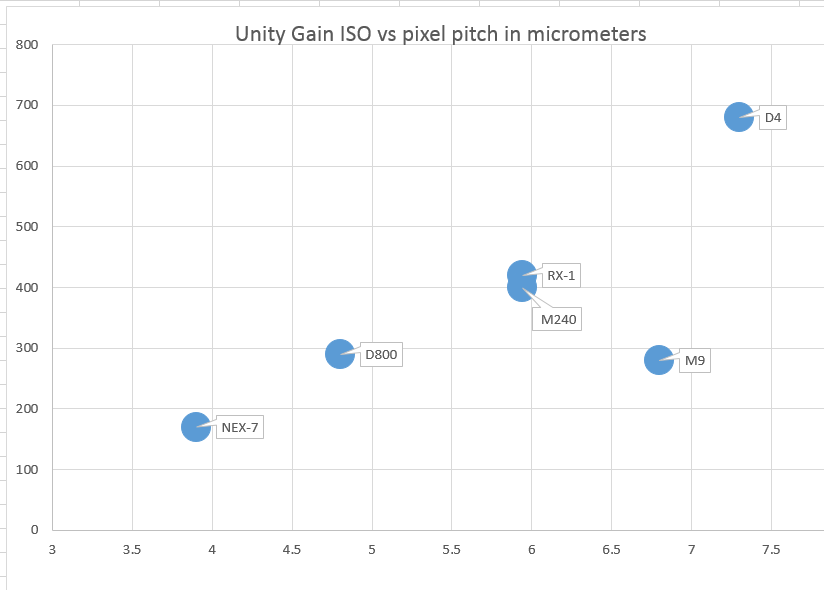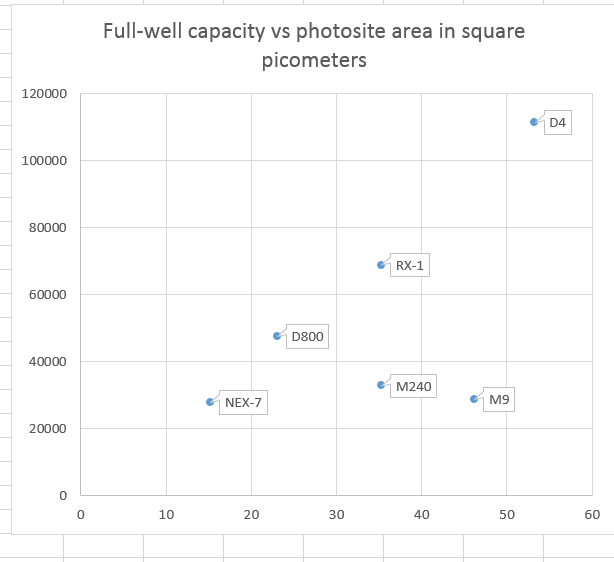Using the methods described in this post, I compute the Unity Gain ISO of the M240 at about 400, and the full-well capacity at about 33000 electrons.
For comparison to some other cameras, I offer the following two graphs.
The Unity Gain ISO of the M240 is right on the state-of-the-art line, and is only slightly lower than that of the RX1.
However, the full-well capacity of the M240 is about a factor of two away from the state of the art. Why is the UG ISO on the conventional curve and the FWC not? Because the base ISO of the M240 is 200, as opposed to 100 for the Nikon and Sony cameras plotted here.


Leave a Reply